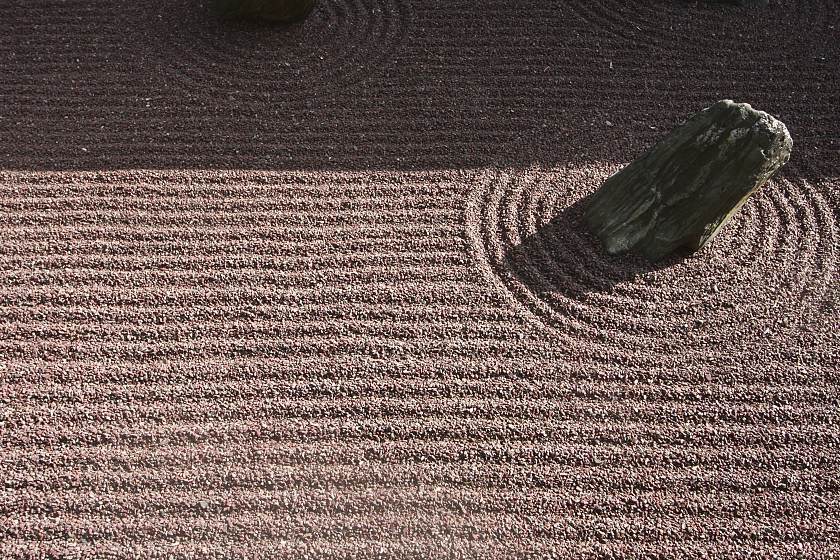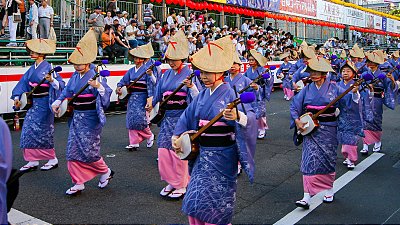Understanding Japanese gardens
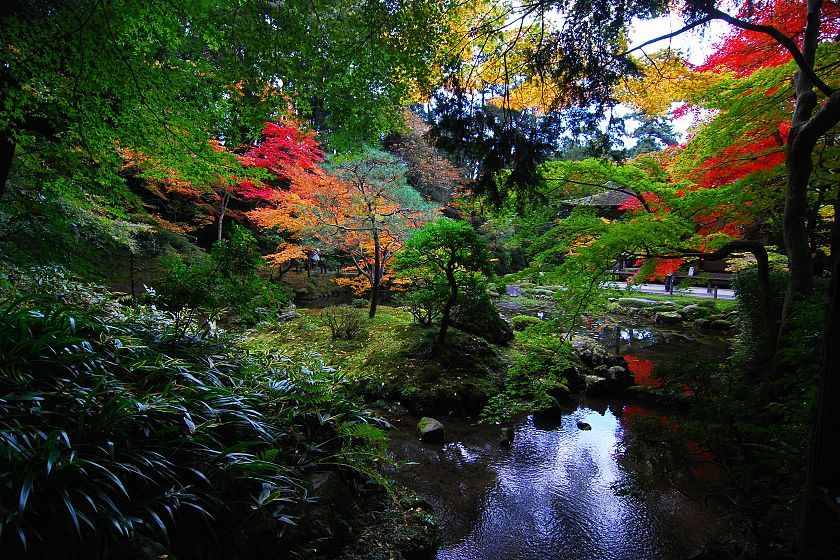
One of the most important forms of traditional culture, Japanese gardens are not only attractive spaces but expressions of aesthetic, philosophical and religious ideas.
Despite their apparent complexity, all traditional gardens can be understood as sharing a number of key elements, as explained by a courtier of the Heian Period in what is probably the world's first gardening textbook, the Sakuteiki (records of garden making). Here is my guide to some of the key features to look out for and appreciate on your next visit to a Japanese garden:
Wabi sabi
As much a worldview as an artistic principle, wabi sabi expresses the feeling when worn or weathered objects resonate with a kind of beauty or pathos, like cracked stone, or unvarnished wood left to age naturally in the elements.
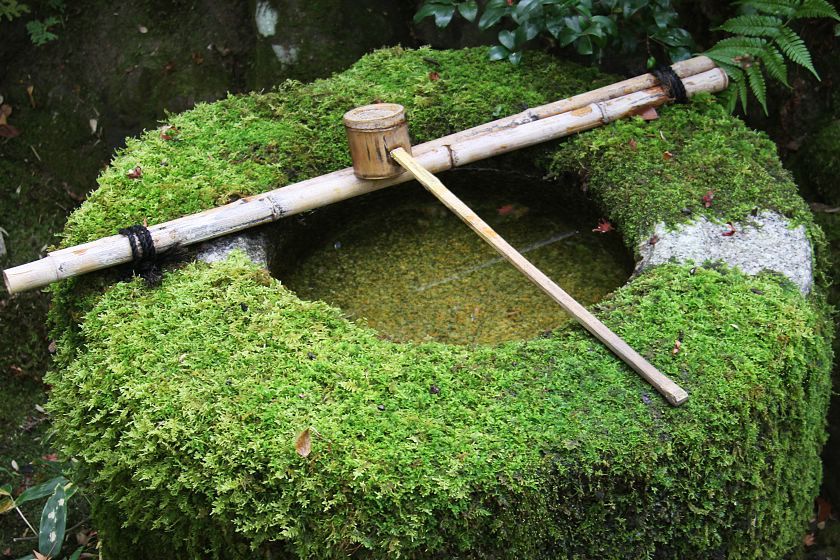
Stones
By the far the most important element of any garden, stones provide structure, line pathways and shape flowing water. Individual stones are carefully selected and positioned to draw the eye in a particular way and often with symbolism in mind - a flat stone in water often represents a turtle, while one standing upright at the edge may indicate a crane.
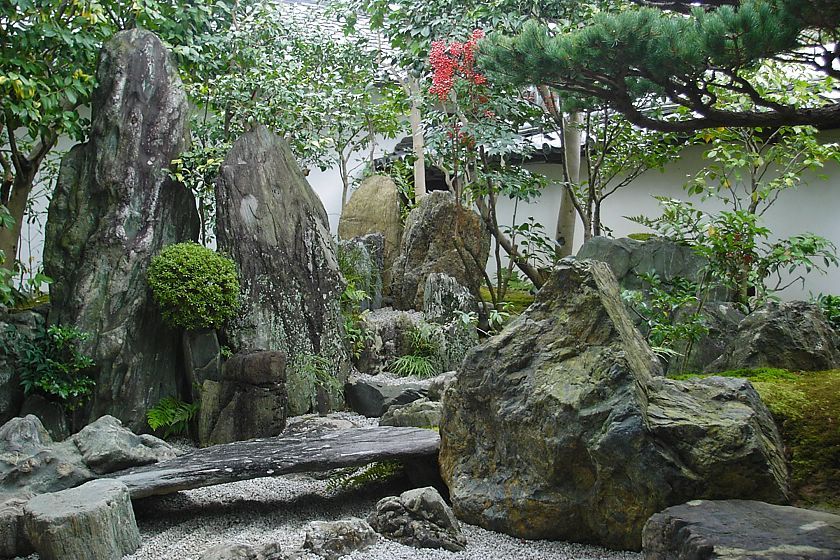
Flowing water
Considered one of the vital elements in Chinese philosophy, flowing water adds life and movement to a garden, giving it the feeling of a living, natural landscape. Despite their simple appearance, streams in Japanese gardens are very carefully engineered to flow at a certain speed and noise level - the Sakuteiki recommends a fall of precisely 9mm over 30cm to create a languid, gently murmuring stream.
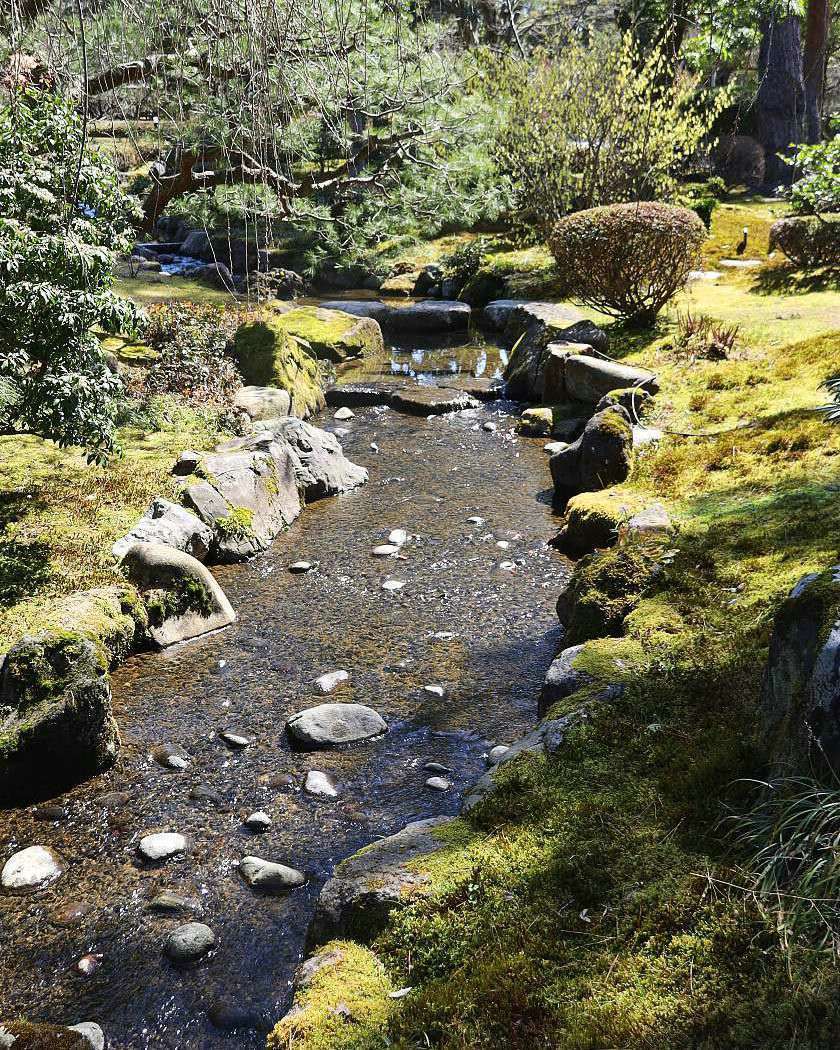
Borrowed scenery (shakkei)
Many gardens are designed to seamlessly incorporate views of the surrounding landscape, as if extending into the distance. As you enter an open space, think about what you can see above and beyond the garden's limits.
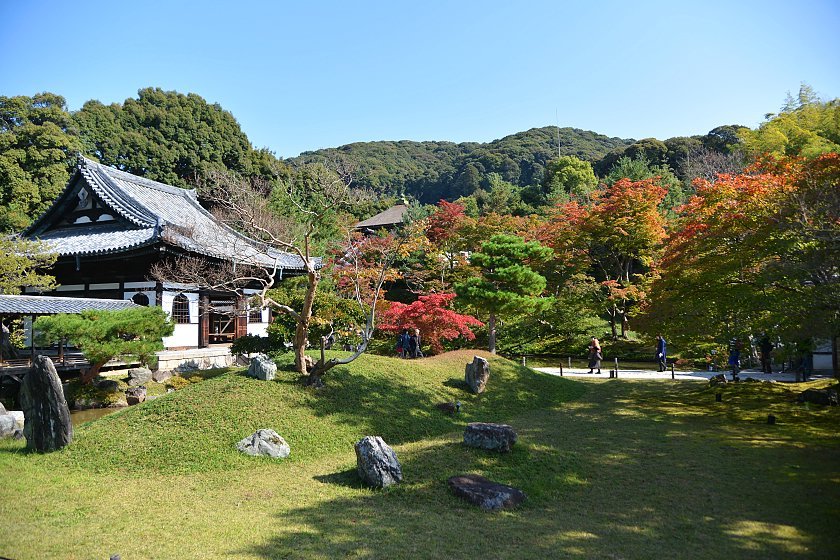
Sculpted trees (niwaki)
One of the most beautiful and distinctive features of Japanese gardening is the way that trees and shrubs are sculpted to fit the shape and ambience of the space. These are in fact the product of years of dedicated work as individual branches are pruned, supported and coaxed into shape. Just like in ikebana (traditional flower arrangement), asymmetry and triangular forms help to create a sense of energy and movement.
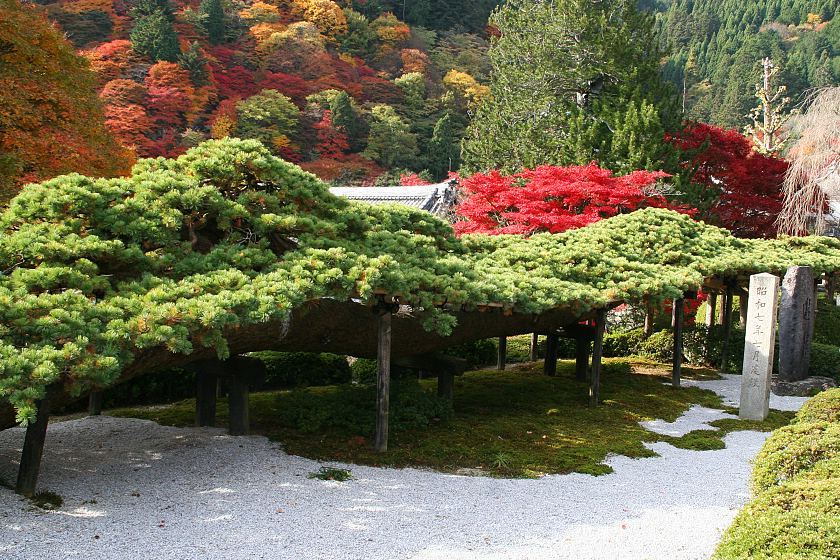
Dry rock gardens (karesansui)
Despite their strong association with Zen, these dry landscapes of rock and raked gravel can be found in the temple gardens of all Buddhist sects - traditionally in front of the abbot's residence (Hojo) where it can be viewed in quiet contemplation from the veranda. While the meaning behind certain rocks and patterns can only be guessed at, simple geometric forms - the outline of a gourd traced in gravel, or a flattened cone indicating Mount Fuji - hint at imagined landscapes in the mind.
